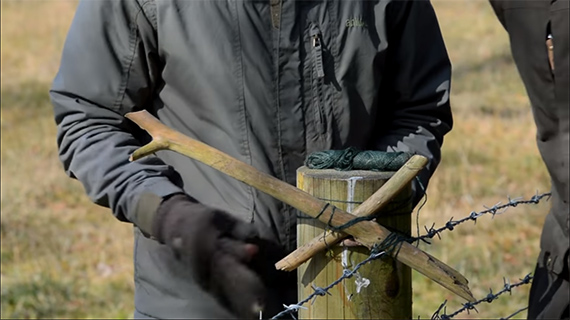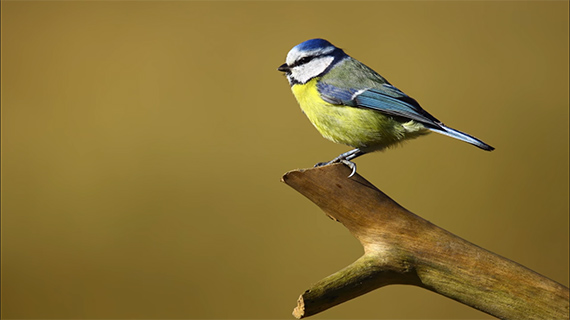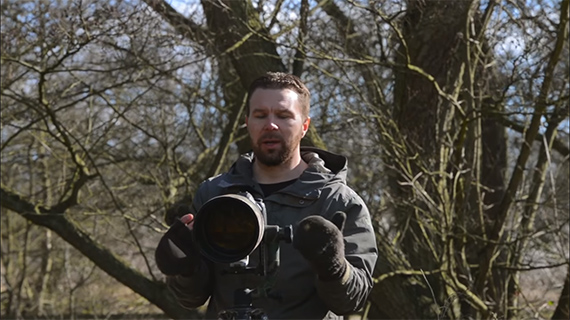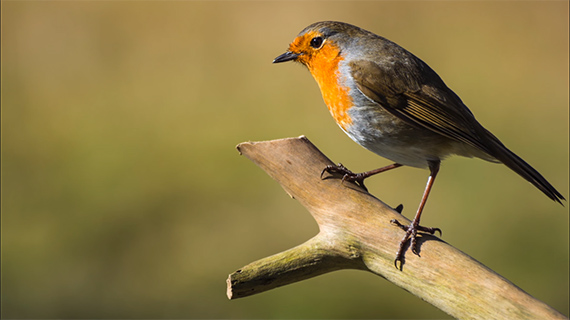An image of a bird perched on a natural looking branch, with its eyes pin sharp, its feathers details clear, beautiful bright colors, and background bokeh that melts like Swiss cheese. No doubt you’ve seen images like that in wildlife magazines or on the internet. But what if you were to be told that many of these shots are actually staged? Practical Photography ventures out in to the woods of North Yorkshire with wildlife photographer Simon Roy to find out how these images are set up and then made:
Setting Up a Perch
Believe it or not your best chances of getting great bird images is in finding the right branch! As Roy explains, he often spends time looking for dead branches in the woods, carries them home to dry, and then uses them as the main prop for his shoots.
He drills holes in the branches, ties them to a post or something along a path, and then puts food inside the holes to entice birds.
Roy deliberately chooses pathways that people frequent. He explains, the birds are familiar that people put out food for them and thus it increases the chances of the birds coming in and landing on the perch.
Make sure that the perch is placed and your camera is set up in so that the hole and the food inside it don’t show up in your shots.
Also, it is imperative that the perch is placed at a location with a clean background. A distracting background can ruin your shot, even though you’ll probably be shooting wide open with the background out of focus.
He sets up his camera very close to his perch setup. It helps that the birds are familiar with human movement and therefore are quite tame.
Camera Settings for Bird Photography
Roy sets up his camera to shoot on single point auto focusing. When he photographs a really fast subject, he prefers to pre-focus on the perch.
Camouflage Yourself
Covering up your exposed hands and fingers is probably a good idea, too. Roy wears black gloves, even when it’s too warm for them. Birds, even tame ones like here, can be spooked by the sight of sudden human movement. So, things like a head popping up from behind a camera or a hand or fingers moving in to press the shutter button are enough to startle a bird.
Another thing that you could try practicing is changing your camera settings with your eyes on the viewfinder. In other words don’t raise your head to change camera settings.
Shooting Technique
Don’t fire away as soon as the bird lands on the perch. Hold off until they’ve had a nibble. They will raise their heads and look around before flying away. That millisecond between when they raise their head and when they fly away is your moment to take the shot.
Also, make sure that the catchlight hits their eye.
Roy says that the best shots happen when the food runs out. That’s when the birds stay on for a longer time as if wondering where all the food has gone.
At the end of the day, it’s not that difficult to make these stunning sharp images. It’s not even about the equipment, but the field craft and the amount of preparation in terms of research and planning that you put in, that counts.
Like This Article?
Don't Miss The Next One!
Join over 100,000 photographers of all experience levels who receive our free photography tips and articles to stay current:










Excellent video but I do have a question, what bird feed do you o\lose? you mentioned the rice but not specific type of food. Also closing the the door but don’t
Thank you, I would never have thought about the food and consistently. Birds, small birds have never been on my priority list until now so I’am going to start looking for great places here, I can see that it can easily hddd
Unethical bating for wildlife photography is not wildlife photography.